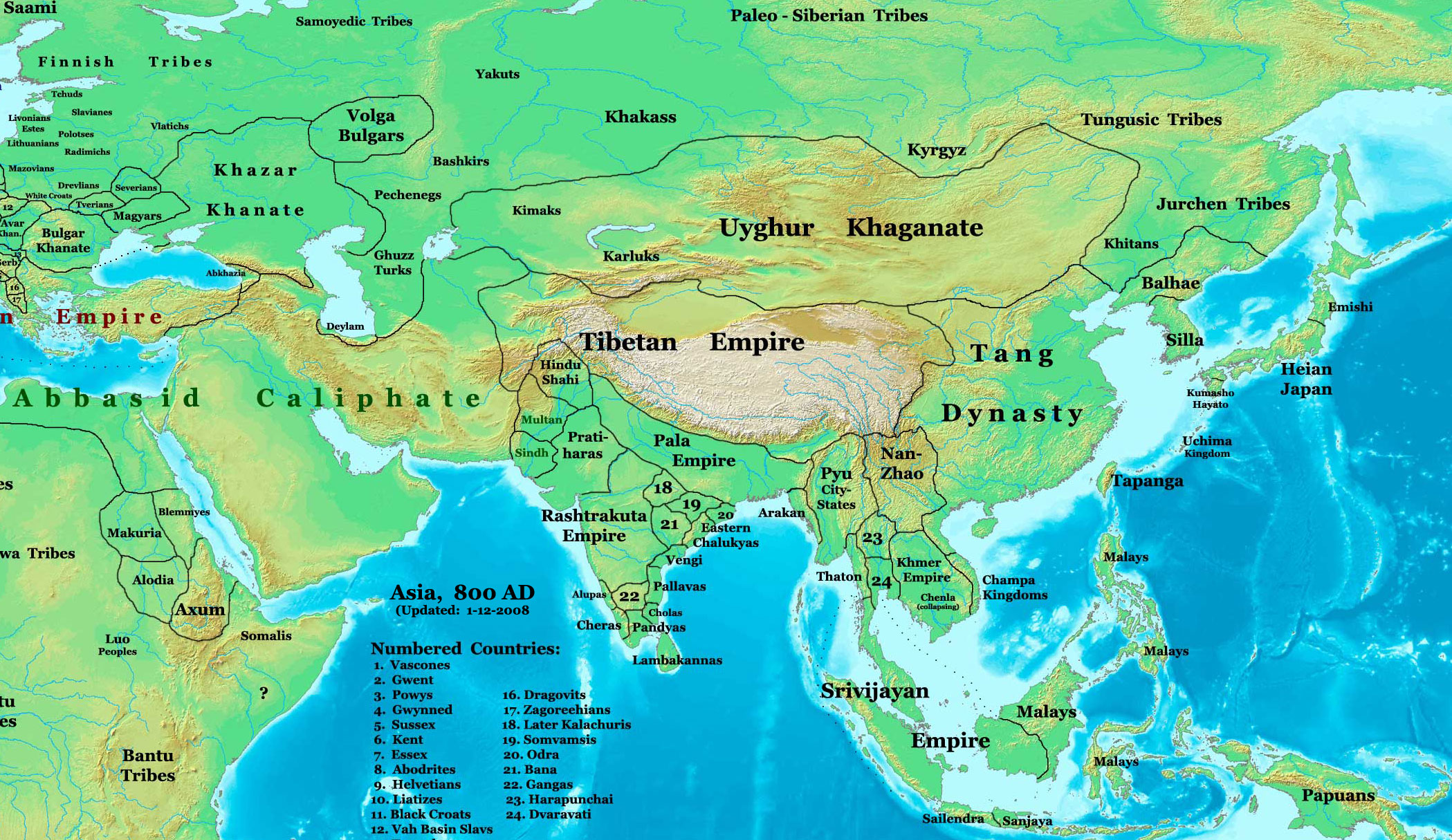|
Jambūvijaya
Jambuvijaya (1923–2009), also known as Muni Jambuvijayji Maharajsaheb, was a monk belonging to the Tapa Gaccha order of Śvetāmbara sect of Jainism. He was known for his pioneering work in research, cataloguing and translations of ''Jain Agamas'' and ancient texts. He was responsible for discovering and publishing many ancient Jains texts lying in different forgotten Jain ''jnana bhandaras'' (ancient Jain libraries). He was a disciple of Muni Punyavijay. Both Muni Punyavijay and Jambuvijay worked all their life in the compilation and publication of ancient Jain Agama literature and cataloguing ancient Jain jnana bhandaras. Muni Jambuvijay was a scholar who devoted his entire life to critically editing Jain scriptures. Early life and family Jambuvijaya was born as Chunilal Bhogilal Joitram in 1923 in town of Mandal, Gujarat. His father's name was Bhogilal Mohanlal Joitram (1895–1959) and his mother's name was Aniben Popatlal (1894–1995). He was born in a deeply religious ... [...More Info...] [...Related Items...] OR: [Wikipedia] [Google] [Baidu] |
Jain Agamas
Jain literature () refers to the literature of the Jain religion. It is a vast and ancient literary tradition, which was initially transmitted orally. The oldest surviving material is contained in the canonical ''Jain Agamas'', which are written in Ardhamagadhi, a Prakrit ( Middle-Indo Aryan) language. Various commentaries were written on these canonical texts by later Jain monks. Later works were also written in other languages, like Sanskrit and Maharashtri Prakrit. Jain literature is primarily divided between the canons of the ''Digambara'' and '' Śvētāmbara'' orders. These two main sects of Jainism do not always agree on which texts should be considered authoritative. More recent Jain literature has also been written in other languages, like Marathi, Tamil, Rajasthani, Dhundari, Marwari, Hindi, Gujarati, Kannada, Malayalam and more recently in English. Beliefs Jains believe their religion is eternal, and the teachings of the first tīrthaṅkara, Ṛṣ ... [...More Info...] [...Related Items...] OR: [Wikipedia] [Google] [Baidu] |
Sutrakritanga
Sūtrakṛtāṅga (सूत्रकृताङ्ग; also known in Prakrit as Sūyagaḍaṃga सूयगडंग) is the second Angas of the 12 main aṅgās of the Jain Svetambara canon. According to the Svetambara tradition it was written by Gandhara Sudharmasvami in Ardhamagadhi Prakrit Prakrit ( ) is a group of vernacular classical Middle Indo-Aryan languages that were used in the Indian subcontinent from around the 5th century BCE to the 12th century CE. The term Prakrit is usually applied to the middle period of Middle Ind ....The text is in two main parts: the first in verse and the second in prose. It is written using techniques including narration and questions and answers, and the chapters start with Sudharmasvami explaining the various doctrines to his chief disciple Jambuswami and answering his questions. According to Sagarmal Jain, the text dates c. 4th-3rd century BCE, but Johannes Bronkhorst argues that due to the Buddhist material contained ... [...More Info...] [...Related Items...] OR: [Wikipedia] [Google] [Baidu] |
Samavayanga Sutra
Samavāyāṅga Sūtra (c. 3rd-4th century BCE) is the 4th amongst the 12 Angas of the Jaina canon. The sutra is believed to have been composed by Gaṇadhara Sudharmasvāmī. This text contains the essence of Jain religion, defined and catalogued systematically. Written c. 300 BCE, it is a part of the collection of texts containing Lord Mahavira’s teachings, collectively termed as Agama Sutras. Additionally, it includes one of the earliest references to the Indian writing tradition. Subject matter of the Agama Samavāyāṅga Sūtra contains elements of mathematics and astronomy. One of the interesting aspects of this text is its portrayal of Monasticism and spirituality in the terms of numerology. Mathematics - The Samavāyāṅga Sūtra seems to be in continuation of the Sthananga Sutra and follows the numeric method of describing substances from 1 to 1 billion. Astronomy – It contains discussion on Mount Meru, the jyotiścakra, the Jambudvīpa, the measuremen ... [...More Info...] [...Related Items...] OR: [Wikipedia] [Google] [Baidu] |
Sthananga Sutra
Sthananga Sutra (Sanskrit: Sthānāṅgasūtra; Prakrit: Ṭhāṇaṃgasutta) (c. 3rd–4th century BCE) forms part of the first eleven Angas of the Jaina Canon which have survived despite the bad effects of this Hundavasarpini kala as per the Śvetāmbara belief. This is the reason why, under the leadership of Devardhigani Ksamasramana, the eleven Angas of the Śvetāmbara canon were formalised and reduced to writing. This took place at Valabhi 993 years after Māhavīra's nirvana. (466 CE). In the vacana held at Valabhi, in Gujarat, the Sthananga Sutra was finalised and redacted. The language used is Ardhamāgadhī Prakrit. The mula sutras of the Sthananga Sutra are difficult to understand without the help of a commentary or tika. Hence, in the 11th century CE, Abhayadevasuri wrote a comprehensive Sanskrit gloss on the Sthananga Sutra. Description The Sthānāngasūtra is known in Prakrit as the Thanam. Hence, the style of the Sthananga Sutra is unique. It is divided into ... [...More Info...] [...Related Items...] OR: [Wikipedia] [Google] [Baidu] |
Jainism
Jainism ( ), also known as Jain Dharma, is an Indian religions, Indian religion whose three main pillars are nonviolence (), asceticism (), and a rejection of all simplistic and one-sided views of truth and reality (). Jainism traces its spiritual ideas and history through the succession of twenty-four , supreme preachers of ''dharma''. The first in the current time cycle is Rishabhadeva, who tradition holds lived millions of years ago; the 23rd is Parshvanatha, traditionally dated to the 9th century Common Era, BCE; and the 24th is Mahāvīra, Mahavira, who lived . Jainism is considered an eternal ''dharma'' with the guiding every time cycle of the Jain cosmology, cosmology. Central to understanding Jain philosophy is the concept of ''bhedavijñāna'', or the clear distinction in the nature of the soul and non-soul entities. This principle underscores the innate purity and potential for liberation within every Jīva (Jainism), soul, distinct from the physical and menta ... [...More Info...] [...Related Items...] OR: [Wikipedia] [Google] [Baidu] |
Standard Tibetan
Lhasa Tibetan or Standard Tibetan is a standardized dialect of Tibetan spoken by the people of Lhasa, the capital of the Tibetan Autonomous Region. It is an official language of the Tibet Autonomous Region. In the traditional "three-branched" classification of the Tibetic languages, the Lhasa dialect belongs to the Central Tibetan branch (the other two being Khams Tibetan and Amdo Tibetan). In terms of mutual intelligibility, speakers of Khams Tibetan are able to communicate at a basic level with Lhasa Tibetan, while Amdo speakers cannot. Both Lhasa Tibetan and Khams Tibetan evolved to become tonal and do not preserve the word-initial consonant clusters, which makes them very far from Classical Tibetan, especially when compared to the more conservative Amdo Tibetan. Registers Like many languages, Lhasa Tibetan has a variety of language registers: * ( Wylie: , literally " demotic language"): the vernacular speech. * ( Wylie: , "honorifics or deference, courtesy"): the ... [...More Info...] [...Related Items...] OR: [Wikipedia] [Google] [Baidu] |
Scholars Of Jainism
A scholar is a person who is a researcher or has expertise in an academic discipline. A scholar can also be an academic, who works as a professor, teacher, or researcher at a university. An academic usually holds an advanced degree or a terminal degree, such as a master's degree or a doctorate (PhD). Independent scholars and public intellectuals work outside the academy yet may publish in academic journals and participate in scholarly public discussion. Definitions In contemporary English usage, the term ''scholar'' sometimes is equivalent to the term ''academic'', and describes a university-educated individual who has achieved intellectual mastery of an academic discipline, as instructor and as researcher. Moreover, before the establishment of universities, the term ''scholar'' identified and described an intellectual person whose primary occupation was professional research. In 1847, minister Emanuel Vogel Gerhart spoke of the role of the scholar in society: Gerhart argued th ... [...More Info...] [...Related Items...] OR: [Wikipedia] [Google] [Baidu] |
Daily News And Analysis
The ''Daily News and Analysis'', abbreviated as ''DNA'', is a Hindi-language news program on Zee news that was earlier an English-language newspaper with multiple local city editions across India. ''DNA'' was first launched as a broadsheet newspaper out of Mumbai, Maharashtra, India on 30 July 2005 through a 50:50 joint venture between the Zee Media Corporation and the Dainik Bhaskar group under the company name Diligent Media Corporation Ltd. The newspaper had first launched its outdoor advertising campaign through billboards and placards in Mumbai during early 2005, with the tagline, "Speak Up, It's in Your DNA", which became its catch-phrase over the months. With the announcement of the launch of ''DNA'' came several other rival newspapers by large media conglomerates in the city, including the first-time-ever Mumbai edition of the predominantly north-Indian ''Hindustan Times'' and the ''Times of India''s rival the '' Mumbai Mirror'' newspaper that was later digitised into a ... [...More Info...] [...Related Items...] OR: [Wikipedia] [Google] [Baidu] |
Jaisalmer
Jaisalmer , nicknamed ''The Golden city'', is a city in the north-western Indian state of Rajasthan, located west of the state capital Jaipur, in the heart of the Thar Desert. It serves as the administrative headquarters of Jaisalmer district. It is a former medieval trading center and the historic capital of the kingdom of Jaisalmer, founded in 1156 by Rawal Jaisal of the Bhati clan of Rajputs. Jaisalmer stands on a ridge of yellowish sandstone and is crowned by the World Heritage Site, Jaisalmer Fort, a sprawling hilltop citadel supported by 99 bastions. This fort contains a royal palace and several ornate Jain temples. Many of the houses and temples of both the fort and of the town below are built of finely sculptured yellow sandstone. The town has a population, including the residents of the fort, of about 78,000. Jaisalmer ranked 9th on Booking.com's Top 10 The Most Welcoming cities in the world. It is the only Indian city on the list. Etymology Jaisalmer was founded ... [...More Info...] [...Related Items...] OR: [Wikipedia] [Google] [Baidu] |
Balotra
Balotra is a city situated in the Balotra district within the state of Rajasthan, India. Previously, it was located in the Barmer district of the Indian state of Rajasthan. It is known for its historical and cultural significance, as well as its role as a industrial, commercial and trading center in the region. Geography Balotra is located at . It has an average elevation of 106 metres (347 feet). Demographics India census, Balotra city has population of 74496 of which 38715 are males and 35781 are females. The population of children between age 0-6 is 10984 which is 14.74% of total population. The sex-ratio of Balotra city is around 924 compared to 928 which is average of Rajasthan state. The literacy rate of Balotra city is 64.39% out of which 73.26% males are literate and 54.78% females are literate. There are 14.2% Scheduled Caste (SC) and 3.37% Scheduled Tribe (ST) of total population in Balotra city. Means of transport Railway Balotra is connected to othe ... [...More Info...] [...Related Items...] OR: [Wikipedia] [Google] [Baidu] |




